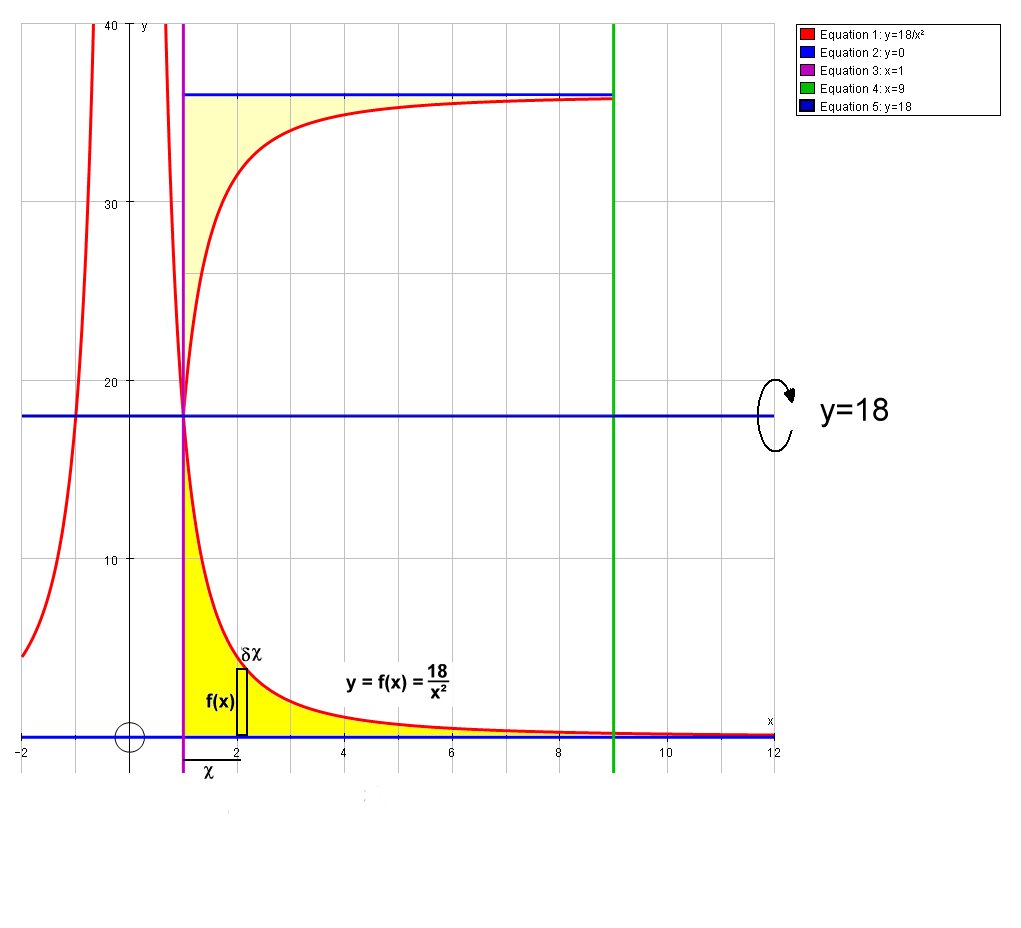How do you use the disk or shell method to find the volume of the solid generated by revolving the region bounded by the graphs #y=(18/x^2)#, #y=0#, #x=1#, #x=9# about the line #y = 18#?
1 Answer
Explanation:

The darker yellow shaded area is the region of rotation, which is bounded by
Imagine an almost infinitesimally thin vertical line of thickness
# {: ("Outer radius",=18), ("Inner radius",=18-f(x)), ("Thickness ",= delta x) :} #
And so the volume of this "washer" would be given by
# \ \ \ \ \ delta V~~ pi("outer")^2delta x - pi("inner")^2delta x#
#:. delta V~~ pi{ ("outer")^2 - ("inner")^2 } delta x#
If we add up all these infinitesimally thin cylinders over the appropriate
# V=int_(x=a)^(x=b) pi{ ("outer") - ("inner")^2 } dx #
So for this problem we have:
# \ \ \ \ \ V=int_1^9 pi( 18^2 - (18-18/x^2)^2) dx #
# :. V = pi int_1^9 ( 18^2 - (18^2-2*18*(18/x^2)+(18/x^2)^2) dx #
# :. V = pi int_1^9 ( 324 - (324-648/x^2+324/x^4)) dx #
# :. V = pi int_1^9 ( 648/x^2-324/x^4) dx #
# :. V = 324pi int_1^9 ( 2/x^2-1/x^4) dx #
# :. V = 324pi int_1^9 ( 2x^-2-x^-4) dx #
# :. V = 324pi [-2x^-1+x^-3/3]_1^9 #
# :. V = 324pi [-2/x+1/(3x^3)]_1^9 #
# :. V = 324pi {(-2/9+1/(3*9^3)) - (-2/1+1/3) } #
# :. V = 324pi {(-2/9+1/2187) - (-2+1/3) } #
# :. V = 324pi {(-415/2187) - (-5/3) } #
# :. V = 324pi *3160/2187 #
# :. V = 12640/27pi #
# :. V ~~ 4620 " unit"^3#

